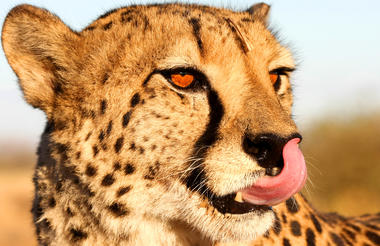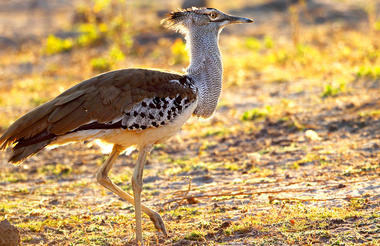Halfway between Windhoek and Etosha lies the well-known Okonjima Nature Reserve. The 22 000 ha Nature Reserve is surrounded by 96 km of fence and was finally completed in 2010. Okonjima is home to AFRICAT, a Carnivore Conservation, which gives the captive carnivores a second chance to be released back into the wild and to take the time it needs, to become a completely independent hunter - in a protected area right in the middle of commercial farmland! Also in the Reserve is a 2000 ha 'safe' zone around Plains Camp, Bush Camp, Bush Suite, the Omboroko Campsite as well as the PAWS Environmental Education Centre.
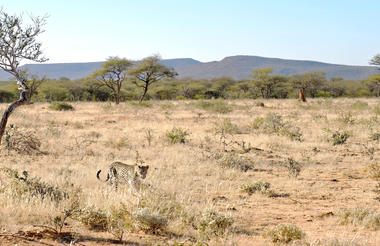
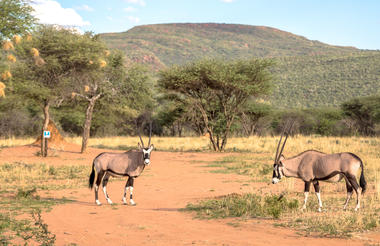
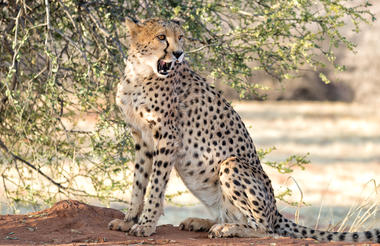
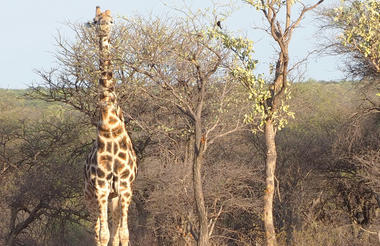

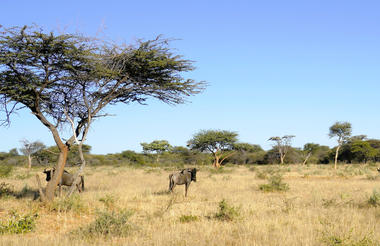
Situated on the eastern side of Etosha, bordering Fisher's Pan, Onguma Game Reserve is one of Namibia's best kept secrets! Here you will be afforded the opportunity of experiencing Africa in all her beauty and diversity. Onguma Game Reserve has more than 34,000 hectares of protected land and wildlife. Our nature reserve boasts over thirty different animal species consisting of plains game including kudu, giraffe, eland, oryx, hartebeest, zebra, impala and many more roam freely as well as predators such as lion, cheetah, leopard, being common residents of the area. The latest addition to the already abundant wildlife at Onguma Game Reserve is a family of black rhinos! More than 300 bird species can also be viewed at Onguma Game Reserve. During the Namibian summer months the nature reserve becomes a bird-watcher's paradise with thousands of species migrating to the wetlands created by the seasonal rains and ephemeral river systems.



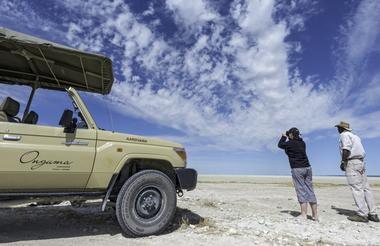


Bordering Angola, on the banks of the Okavango River in northern Namibia, the town of Rundu serves as the capital of the eastern Kavango region. Rundu is renowned for its local woodcarvers market and is filled with impressive woodcarvers' workshops. The town provides a great stopover to refuel for visitors heading to Katima Mulilo, enthralling Popa Falls, or Mahangu Game Reserve, home to the endangered wild dog and lion, leopard, elephant, cheetah, and hippo. Visitors to Rundu can also look forward to great game viewing, excellent bird watching as well as kayaking on the spectacular Kavango River.



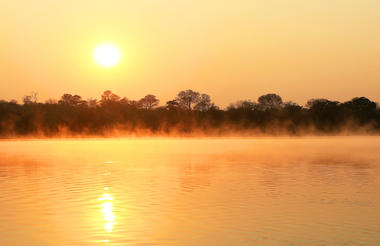
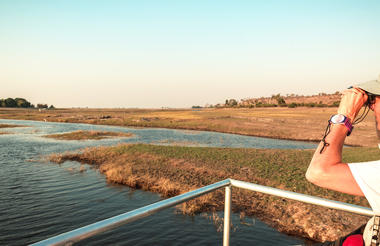
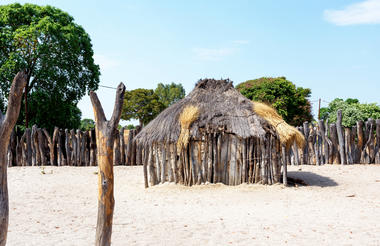
Meandering through the spectacular Caprivi Strip in northwest Namibia, the Kwando River rises from the central Angolan highlands forming the boundary between Namibia, Zambia and Angola. The area surrounding the Kwando River is known for its protected game reserves, national parks and wildlife sanctuaries. It offers excellent game viewing with the perennial waters of the river attracting plentiful wildlife including large herds of elephant, hippos, crocodiles, red lechwe, turtles, zebra, impala, spotted-necked otters and over 400 species of bird. Visitors can enjoy a relaxing stay at one of the many lodges set on the banks of the river and soak up the spectacular views of wild Africa. Popular activities include: game viewing, bird watching, fishing, and camping.
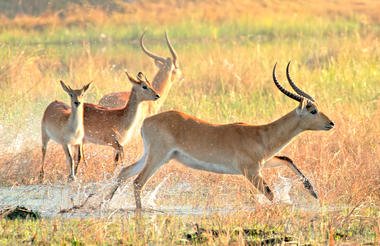
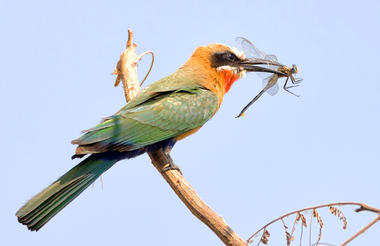
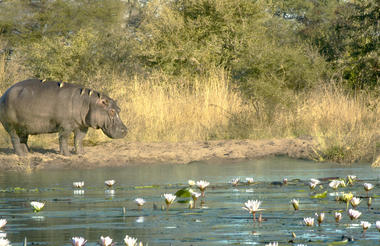
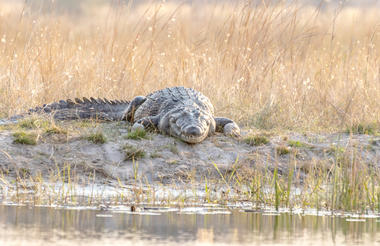
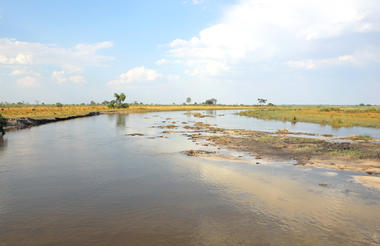
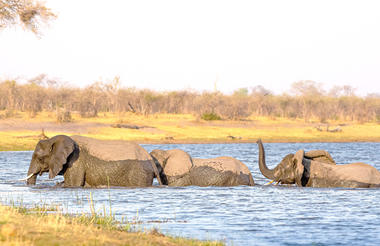
The Victoria Falls constitutes one of the most spectacular natural wonders of the world. The Local people call it "Mosi-oa-Tunya" -- the smoke that thunders and the Falls are remarkable.
There is a magic about them manifested in the towering column of spray when the river is high, the thunder of the falling water, the terrifying abyss and tranquil lagoons upstream in which hippo and deadly crocodiles lurk.
The Victoria falls is 1 708 meters wide, making it the largest curtain of water in the world. It drops between 90m and 107m into the Zambezi Gorge and an average of 550,000 cubic metres of water plummet over the edge every minute.
Remarkably preserved in its natural state, Victoria falls inspires visitors as much today as it did David Livingstone in the 1860's. The falls and the surrounding area have been declared National Parks and a World Heritage Site, thus preserving the area from excessive commercialisation.
Seasons
Victoria Falls Waterfall is fed by the waters of the mighty Zambezi River. Therefore it goes without saying that when there is more water in the river there is more water going over the falls.
The catchment area of the Zambezi River is the Angolan Highlands, and it takes about 6 months for the water to filter through to Victoria Falls Area. Therefore the flow of water over the falls has absolutely nothing to do with the ambient weather. For example, in winter which is a traditionally low rain fall time, the flow of the falls is at its greatest, whilst during the summer, which is traditionally a higher rain fall period, the flow of the falls is exceptionally low.
For security reasons many guests prefer to travel to the Zambian side of the falls. However the gradient of the land means that the Zambian side of the falls is slightly higher than the Zimbabwean side of the falls. Therefore when the water level drops from the river, it subsides from the Zambian side first. Therefore between October and January the Zambian side of the falls has little to no water going over it. Therefore in order to fully appreciate the Victoria Falls at this time of year, a visit to the Zimbabwean side is almost mandatory.
Water levels in the Falls can affect river activities, especially the River Rafting. As a general rule the River Rafting does not operate in April as the gorge is too full and the water levels dangerous. This does vary according to season and the prevailing waterlevels so speak to your Rhino Africa consultant about the time of year you intend travelling and establish which activities are available
'High water' occurs between February and July, and peaks between March and April. During this period, a rise of one metre in the level of the Zambezi river produces a 5 metre increase in the level of the water forced through the gorge. The spray thrown up is dense, drenching and thick with rainbows - a fantastic sight when viewed from the air.
‘Low Water’ period runs between August and January and is at its lowest between November and early December. This is the time when there is very little spray and visitors are able to fully appreciate the geological formation of the falls and the full length and breadth of them. The water level in the gorge drops and the Zambezi River becomes its most awesome and deserving of its white water rafting reputation as being the wildest experience in the world
Summer is from around October to April, during which it gets quite hot - to around 30°C, while night temperatures drop to around 14°C. Thunderstorms may occur in the late afternoon. The rainy season is from November to March.
Winter is roughly from May to September/October. The days are generally dry and sunny - around 20°C, with the temperature falling at night when it can get as cold as 5ºC.
National Parks
Open to visitors throughout the year, the Victoria Falls National Park in north-western Zimbabwe protects the south and east bank of the Zambezi River. It covers 23.4 km² extending from the larger Zambezi National Park about 6 km above the falls to about 12 km below the falls.
A notable feature of the park is the rainforest which grows in the spray of the falls, including ferns, palms, liana vines, and a number of trees such as mahogany not seen elsewhere in the region.
Mosi-oa-Tunya National Park in Zambia is an UNESCO World Heritage site and is twinned to the Victoria Falls National Park on the Zimbabwean side. The Park covers 66 km² (25.5 square miles) from below the falls in a north-west arc along about 20 km of the Zambian river bank.
It froms the south-western boundary of Livingstone and has two main sections, a wildlife park at its north-western end and the land adjacent to the Victoria Falls.
The national parks contain abundant wildlife including sizable populations of elephant, buffalo, giraffe, zebra, and a variety of antelope.
Activities
No one is going to complain of being bored in Victoria Falls. Frequently and affectionately coined the adventure capital of the world, there are lots of things to see and do in Victoria Falls. Activities on offer include: Bungee Jumping, White Water Rafting, Helicopter Flips, Boat Cruises, Canoeing, Elephant Back Safaris, Day Trips to Chobe, Walking with Lions, Adrenaline Days, Bridge Swings, Jet Boats, Skydiving, Microlighting, Walks and Game Drives.
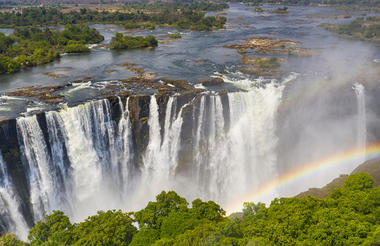
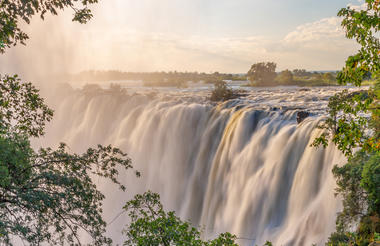

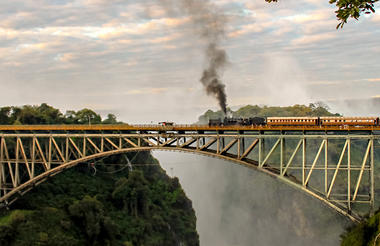
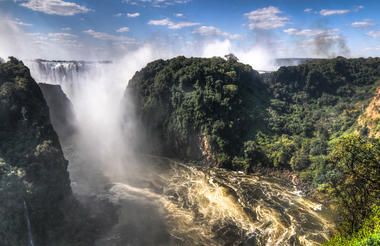
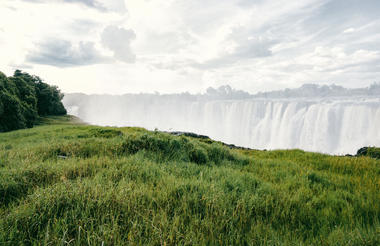
The Chobe River forms the northern boundary of the Chobe National Park, renowned for its reliable and diverse game viewing. Safaris are conducted both by boat and on land. This section of the park is best known for its elephant and hippo populations but the waters attract all manner of game including large herds of buffalo and the lions that prey on them.
Situated 180 kilometres north of Francistown, the small village of Nata is a popular stopover between Maun and Kasane along the ‘game drive route’ (there is often a chance to catch a glimpse of wildlife along the way). The unique surrounding landscapes feature white sand, tall termite mounds, and Mokolwane palm trees. The Nata Sanctuary is a particular highlight for avid bird watchers, where lucky visitors can be rewarded with large flocks of Flamingos and Pelicans, which breed here each year. The town is also a perfect base for exploring the legendary and spectacular Makgadikgadi Pans, where quad biking and four-wheel-drive tours can be enjoyed.
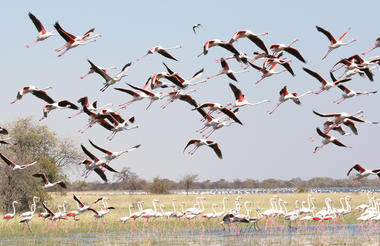
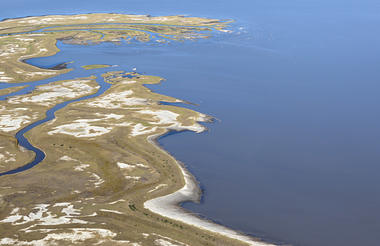
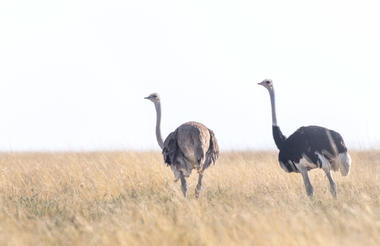



Lying in the middle of the largest expanse of sand on earth the Okavango Delta is one of Africa’s most amazing, sensitive and complex environments supporting a spectacle of wilderness and wildlife. Unique as one of the world’s few inland deltas, the placid waters and lush indigenous forests offer a safe haven for innumerable bird and wildlife species. The Okavango Delta offers a number of activities for the visitor; game viewing, birding and fishing are all on offer. One can experience this magical world of islands and waterways from land, air and water. Highlights include the elusive Sitatunga antelope which has found refuge in this pristine wetland ecosystem, while birds such as the African fish eagle, Pel's fishing owl and many others provide a spectacular display.
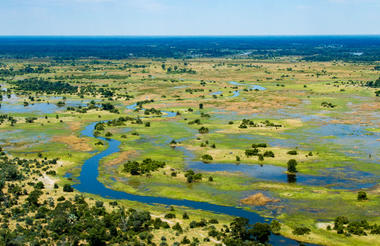
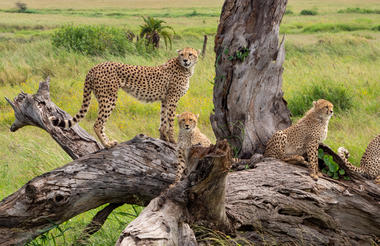
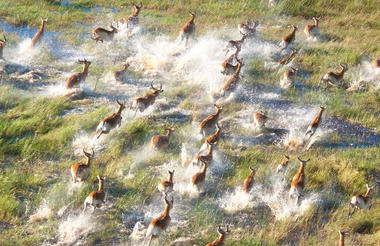
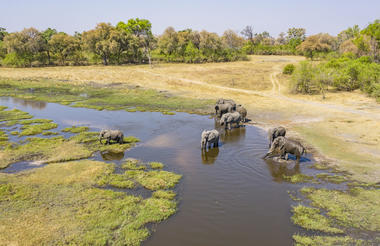
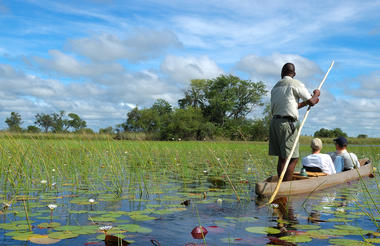
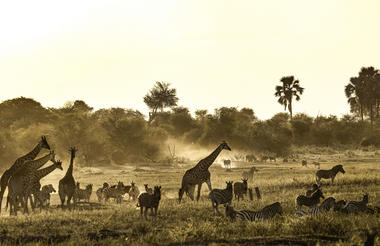
The Hainaveld and Ghanzi Farms surround the northwestern border of the Central Kalahari Game Reserve in Botswana and serve primarily as cattle farming and game viewing areas.The Ghanzi area is home to over 200 cattle farms and is known as the centre of Botswana’s cattle farming industry. This area is home to a blend of cultures including the Bakgalagadi, who are the original inhabitants, the Herero, the San, the Batawana, and the Afrikaaners. Situated on the Northern border of the Central Kalahari Game Reserve, the Hainaveld area, known for its game viewing, first-class bird watching and cultural tourism. Visitors can explore local villages, learn about the ancient Kalahari hunter-gatherer’s traditional way of life, relax at a luxury lodge or spend a day on safari spotting abundant wildlife.






Situated east of the capital city of Windhoek, the area of the Kalahari North can be found in the northeastern reaches of Namibia. The expansive Kalahari Desert spans over seven countries, some of which include: South Africa, Botswana, and Namibia. The Okavango River Delta forms part of the northern region of the desert creating an array of waterways and wetlands which support an abundant variety of wildlife. The northern central region is home to ancient dry riverbeds called 'omuramba'. Kalahari North is blanketed in endemic acacia- camelthorn trees, ephemeral rivers, a fossil watercourse and boasts a reasonably regular rainfall, making it the ideal habitat to support fauna and flora. Visitors can enjoy a comfortable stay at one of many lodges and guest farms dotting the area and explore the pristine landscape.
